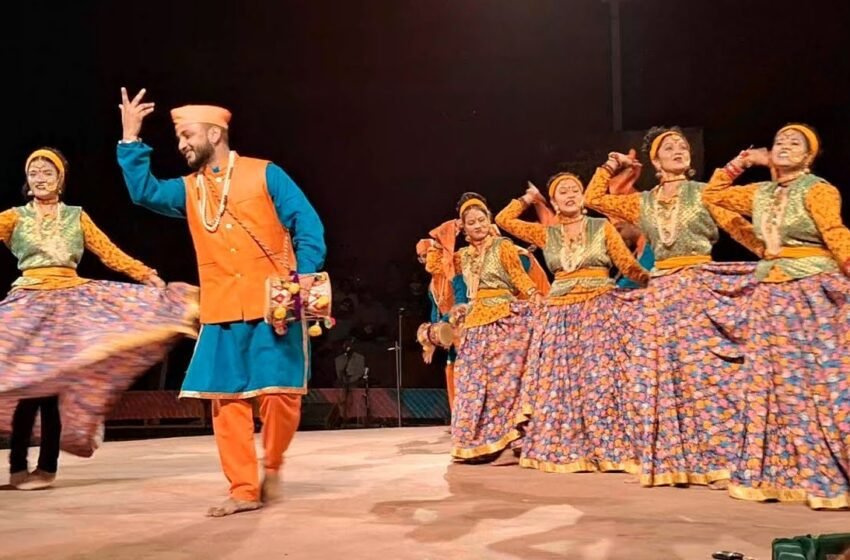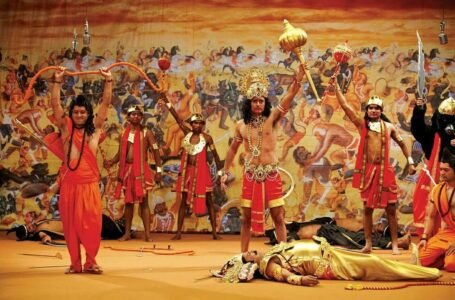Chhapeli Dance: A Celebration of Love and Culture in Uttarakhand

Uttarakhand, known for its majestic Himalayan landscapes and vibrant cultural heritage, is home to several traditional art forms that reflect its rich history. Among these, the Chhapeli Dance stands out as a unique and romantic folk tradition. Originating in the Kumaon and Garhwal regions of Uttarakhand, the Chhapeli Dance is a vibrant expression of love, joy, and cultural identity. It has not only served as a platform for couples to strengthen their bond but has also become a symbol of Uttarakhand’s cultural richness.
Origins of the Chhapeli Dance
The Chhapeli Dance has roots that trace back to the undivided state of Uttar Pradesh, indicating its shared heritage with the present-day states of Uttarakhand and Uttar Pradesh. While its precise origins remain shrouded in mystery, the dance is deeply rooted in the agrarian and tribal traditions of the region.
Historically, Chhapeli was performed exclusively by lovers, making it one of the rare cultural activities to openly celebrate romantic relationships. According to folklore, couples who performed the Chhapeli Dance together while dressed in colorful attire and playing traditional instruments would receive blessings to strengthen their bond. This belief elevated the dance to a sacred act of love, deeply ingrained in the customs of the local tribes.
Performance and Symbolism
The Chhapeli Dance is a couple’s dance where both male and female performers embody traditional roles. Women typically hold a mirror in one hand and a handkerchief in the other. These items symbolize beauty and readiness, with the mirror reflecting the woman’s efforts to prepare herself for her beloved. Men, on the other hand, carry a Hudukka (a small drum) on their left shoulder, which they play while dancing.
The dance’s choreography is relatively simple yet expressive, with graceful movements that align with the rhythm of the accompanying music. The man often sings songs praising the beauty of his partner, sometimes teasing her playfully about her expressions of love. These performances are a celebration of affection and devotion, capturing the joy of being in love.
The music that accompanies the Chhapeli Dance is equally significant. Instruments like the Hurka, Manzira, and Flute are integral to the performance. Their bright and upbeat melodies add vibrancy to the dance, creating an atmosphere of celebration and togetherness.
Cultural and Social Significance
The Chhapeli Dance holds a special place in the cultural fabric of Uttarakhand. It is not merely a dance but a narrative of love, romance, and human connection. In its original form, the dance allowed couples to express their emotions publicly in a society where such displays of affection were often restricted.
Over time, however, the tradition of couples performing the dance has evolved. Today, the Chhapeli Dance is taught to groups irrespective of romantic ties, focusing more on preserving its cultural and historical significance. Tribes across Uttarakhand are making concerted efforts to pass down this art form to younger generations.
While the dance no longer strictly adheres to its romantic roots, its themes of joy, beauty, and love remain intact. It continues to serve as a reminder of the region’s openness to celebrating human emotions, making it a unique cultural phenomenon.
Attire and Instruments
The costumes worn during the Chhapeli Dance are as significant as the performance itself. Women wear traditional attire that reflects the vibrant culture of Uttarakhand. Their colorful dresses and ornaments enhance the visual appeal of the performance, symbolizing beauty and celebration.
Men wear traditional Marathi-inspired clothing, which includes a white dhoti, angarakha (a type of tunic), and a pheta (turban). They often accessorize with colorful handkerchiefs, adding a dynamic touch to the performance.
The Instruments used in the Chhapeli Dance are traditional and region-specific. The Hurka, a drum, is the most prominent instrument, setting the rhythm for the performance. The Manzira (a pair of small cymbals) and the Flute add layers of melody, enriching the musical experience. These instruments, crafted by local artisans, are a testament to Uttarakhand’s rich musical heritage.
Chhapeli Dance in Modern Times
Despite its cultural significance, the Chhapeli Dance is facing challenges in contemporary times. The growing influence of modern lifestyles and entertainment has led to a decline in traditional practices. Moreover, the original tradition of romantic couples performing the dance has largely faded, as societal norms have changed and restricted public displays of affection.
However, efforts are being made to revive and preserve this folk tradition. Cultural organizations and local communities are actively promoting the Chhapeli Dance by organizing workshops, festivals, and competitions. These initiatives aim to educate people about the dance’s history and cultural importance, ensuring that it remains an integral part of Uttarakhand’s heritage.
Tourism has also played a role in bringing attention to the Chhapeli Dance. Visitors to Uttarakhand are often captivated by its unique charm, prompting them to learn more about the region’s cultural traditions. This increased awareness has the potential to rejuvenate interest in the dance, particularly among the younger generation.
The Romantic Spirit of Chhapeli
At its heart, the Chhapeli Dance is a celebration of love and human connection. It captures the essence of romance through its graceful movements, melodious music, and vibrant costumes. The dance’s ability to bring people together, whether as performers or spectators, underscores its universal appeal.
In a world where traditions are increasingly at risk of being forgotten, the Chhapeli Dance stands as a reminder of the importance of preserving cultural heritage. Its themes of love, joy, and togetherness resonate across generations, making it a timeless art form.
Conclusion
The Chhapeli Dance of Uttarakhand is more than just a performance—it is a cultural legacy that reflects the region’s values and traditions. While its romantic origins may have evolved over time, the dance continues to be a source of joy and pride for the people of Uttarakhand.
Efforts to revive and promote the Chhapeli Dance are crucial to ensuring its survival in modern times. By celebrating this art form, we not only preserve a piece of Uttarakhand’s history but also embrace the universal themes of love and connection that it represents.
As we look to the future, it is essential to support initiatives that honor traditional art forms like the Chhapeli Dance. In doing so, we keep alive the spirit of romance and cultural richness that defines Uttarakhand, ensuring that its legacy endures for generations to come.


